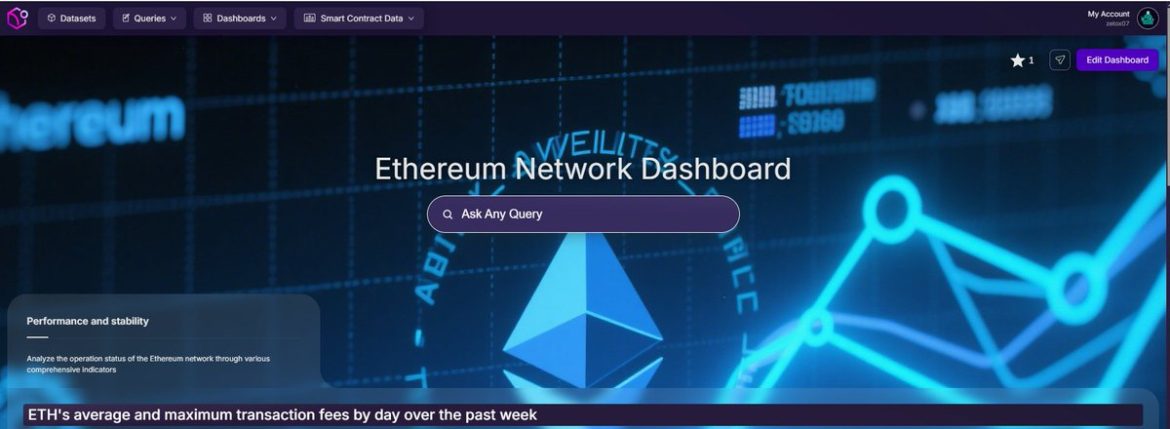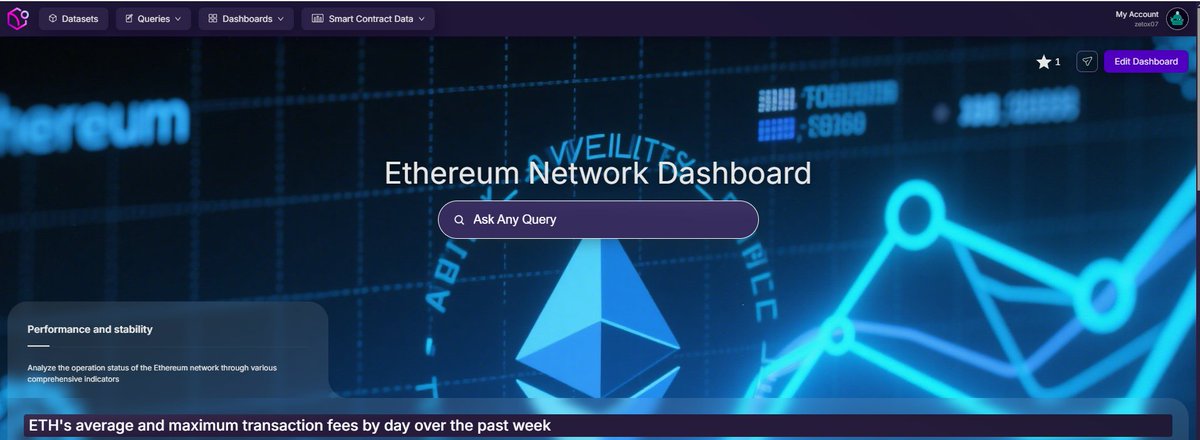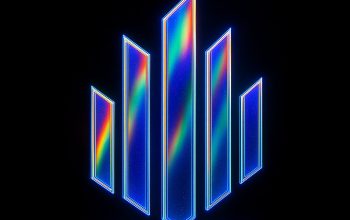Ethereum Network Analysis: A Comprehensive Dashboard and Recent Developments
Introduction
Imagine the Ethereum network as a bustling city, where transactions are the cars on the road, gas prices are the tolls, and smart contracts are the buildings that house various businesses. To navigate this complex metropolis, we’ve built a real-time dashboard that provides a clear, intuitive overview of Ethereum’s mainnet. Let’s explore this tool and delve into recent developments shaping the Ethereum ecosystem.
The Ethereum Network Dashboard
At a Glance
Our dashboard, powered by Space and Time’s data platform, offers a panoramic view of Ethereum’s health and activity. Here’s a sneak peek into what it offers:
– Gas Prices: Real-time gas prices to help users understand transaction costs.
– Network Activity: Metrics like transaction volume, new addresses, and active addresses to gauge network engagement.
– Blockchain Performance: Key indicators such as block time, gas used, and uncle rates to assess network efficiency.
– Economic Activity: Data on stablecoin supply, ETH balance changes, and mining revenue to monitor economic trends.
Deep Dive: Gas Prices and Network Activity
Gas Prices: A Tale of Supply and Demand
Gas prices on the Ethereum network are determined by supply and demand. When network congestion increases demand, gas prices rise. Our dashboard helps users understand these fluctuations, enabling them to time their transactions strategically [1].
Think of it like this: when traffic (demand) increases on a highway, toll prices (gas prices) go up. By keeping an eye on the dashboard, users can avoid peak congestion (high gas prices) and plan their transactions during off-peak hours.
Network Activity: The Pulse of Ethereum
The dashboard’s network activity metrics provide insights into Ethereum’s user base and adoption. A surge in new addresses, for instance, might indicate a bullish market or the launch of a popular dApp. Meanwhile, active addresses reveal which projects are driving Ethereum’s day-to-day transactions [2].
It’s like watching a city’s population grow and change over time. By monitoring these metrics, users can identify trends and make informed decisions about their involvement in the Ethereum ecosystem.
Recent Developments in the Ethereum Ecosystem
OpenAI’s Geolocation Breakthrough
OpenAI has made waves with its new models (o3 and o4-mini) that can identify geolocations in images with remarkable accuracy. This development could revolutionize image analysis and geotagging, but it also raises privacy concerns [3].
Imagine being able to pinpoint the exact location of a photo just by looking at it. While this technology has immense potential, it also highlights the importance of privacy and responsible data usage in the AI space.
Solana Surpasses Airbnb’s Market Cap
In a significant milestone, Solana’s market capitalization has surpassed that of Airbnb, reaching $72.7 billion. This achievement underscores the growing interest and investment in the Solana ecosystem [3].
This development is like watching a new startup grow from a small office to a skyscraper, attracting more and more attention along the way. It’s a testament to the potential and appeal of the Solana network.
Ethereum Gas Price Trends
Ethereum’s average gas price has been fluctuating, with recent peaks coinciding with market volatility and network congestion. As of April 21, 2025, the average gas price stands at 20.5 Gwei [4].
Think of gas prices like the cost of a taxi ride. They go up when demand is high (e.g., during rush hour or when there’s a big event in town). By keeping an eye on gas price trends, users can plan their transactions around these peaks.
Analyzing Crypto Projects: A Simple Thread
A recent Twitter thread by @Remexsnipes offers a straightforward method for analyzing crypto projects, helping users spot red flags and find promising gems. The thread is particularly useful for projects in the Solana and Ethereum ecosystems [5].
This thread is like a helpful guidebook for navigating the crypto landscape. It provides users with essential tips and tools to make informed decisions about which projects to invest in and support.
Etherscan’s Grok: Smart Contract Code Analysis
Etherscan, the go-to platform for Ethereum blockchain data, has introduced Grok, a tool that enables users to read and analyze smart contract code directly on the platform. This feature enhances transparency and understanding of Ethereum-based projects [6].
Grok is like a new feature in a popular city map app that allows users to see the blueprints of buildings, helping them understand their layout and purpose. It’s a valuable addition that promotes transparency and accessibility in the Ethereum ecosystem.
Conclusion: Navigating the Ethereum Ecosystem
The Ethereum network dashboard and the recent developments discussed in this report provide a comprehensive overview of the Ethereum ecosystem. By leveraging these tools and staying informed about the latest trends, users can make data-driven decisions and navigate the ever-evolving blockchain landscape.
Sources:
[2] Ethereum Blockchain Activity
[3] CoinMarketCap
[4] Ethereum Gas Price History
[5] Twitter Thread: How to Analyze a Project (Minted or Not)
[6] Etherscan Grok
Related Pages:
– Ethereum Foundation
– Ethereum GitHub
– OpenAI
– Solana
– Airbnb
– Etherscan





